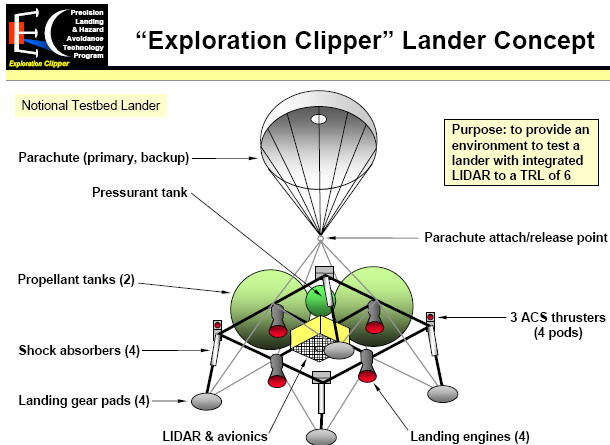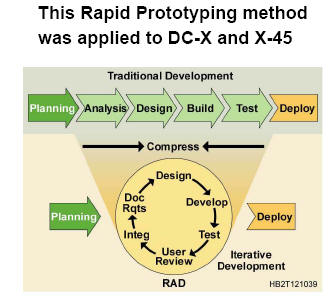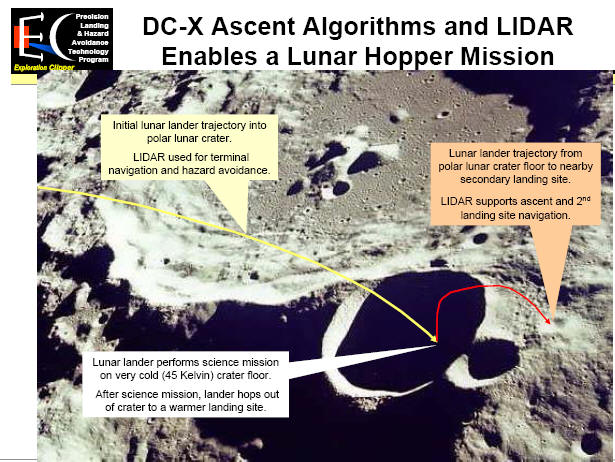The remote sensing technique of using a laser to examine things at a distance is generally referred to as lidar, which stands for "light detection and ranging."
Boeing was awarded a NASA Human and Robotic Technology Development contract in 2004 called the Precision Landing and Hazard Avoidance Technology Demonstration. The program is to help NASA to develop the critical technologies needed to return to the moon and one day to Mars called the Vision for Space Exploration. As part of this four-year demonstration with a first year value of $3.1 million, engineers at Huntington Beach, Calif. are to integrate Light Detection and Ranging (Lidar) terrain mapping and safe site selection software and hardware with flight proven guidance and control to provide autonomous navigation and hazard avoidance during landing. Boeing is scheduled to develop the hardware and software that will build a prototype lander for testing, culminating in a drop test over hazardous terrain.

In order to demonstrate Adaptive Software Architecture that is applicable to different Lunar and Mars lander concepts with technology that includes a LIDAR sensor, site algorithms, guidance navigation and control integrated, fault tolerant implementation, a rapid prototyping method is being used.

NASA Human and Robotic Technology Development is strategically linked to Project Constellation Spirals one and two, which are efforts to return humans to the moon by 2020.

A sister technology, laser radar, or ladar, uses a laser like a radar to locate an object. Lidar, however, refers to the more general case of using a laser to derive additional properties of an object such as density or chemical composition.
Mars rover takes its first spin on the red planet
In a major milestone, the six-wheel Curiosity Mars rover took its first baby steps Wednesday, rolling about 15 feet forward, performing a slow 120-degree pirouette and then backing up eight feet to prove the $2.5 billion science lab is, in fact, mobile and ready to rove.
FULL STORY
Alternative Energy Related Articles
- Alternative Energy for the Home
- Alternative Energy from the Ocean
- Alternative Energy in Ireland
- An Alternative Energy Education Method
- An Energy Alternative: Free Energy
- Biofuels as Alternative Sources of Energy
- Consultants on Alternative Energy
- Developing Nuclear Power as Alternative Energy
- Ferns Remove Arsenic from Soil and Water
- Geothermal Power as Alternative Energy
- Greece Olive Oil Industry, Biofuel Targets and Quantum Dots
- High Resolution Remote-Sensing Satellite Launches
- How to Seek Grants for Alternative Energy R & D
- Investing in Alternative Energy Stocks
- Investment into Alternative Energy Research and Development
- Investments in Alternative Energy
- Jobs in Alternative Energy Fields
- Precision Ranching
- Pursuing Alternative Forms of Energy
- Remote Sensing Using LDIR
- Renewable Fuels for Alternative Energy
- Resources for Alternative Energy
- REVIEW: E-Vap Cap
- Solar Energy Collecting as an Alternative Energy Source
- Some Suppliers of Alternative Energy
- The Ways that the Military is Using Alternative Energy
- University Research into Alternative Energy
- What is Alternative Energy
- Wind Power as a Viable Solution to Meeting Alternative Energy Needs


